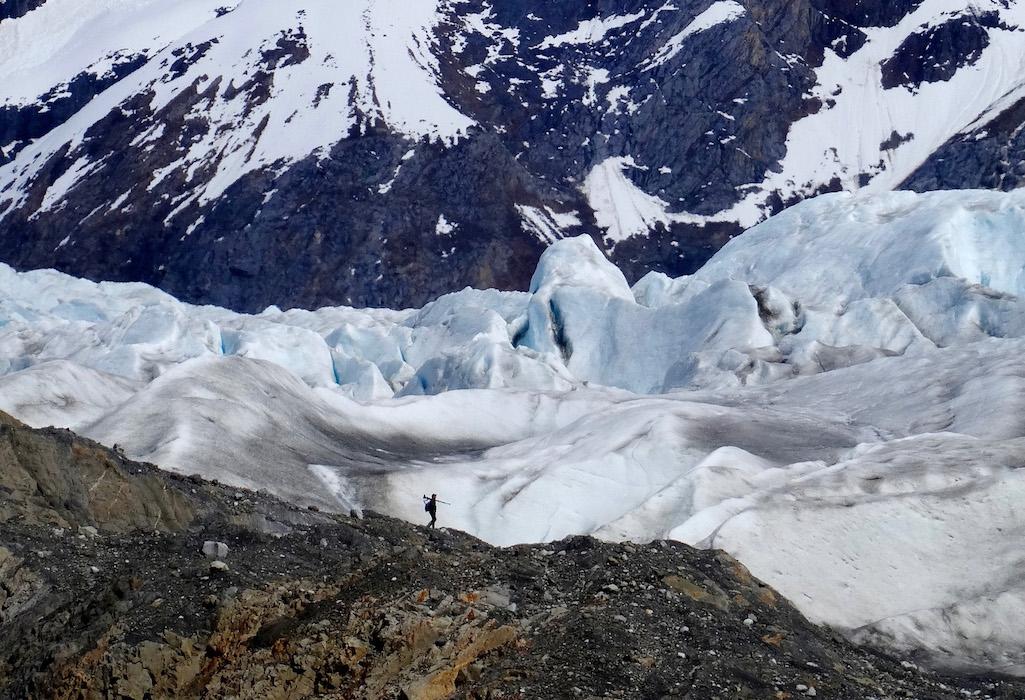
A wilderness management plan has been approved for Glacier Bay National Park and Preserve/Janene Driscoll
A plan for managing nearly 2.8 million acres of wilderness lands and waters in Glacier Bay National Park and Preserve in Alaska has been approved by the National Park Service.
“The plan is intended to be a model for meeting NPS Wilderness stewardship policy requirements while acknowledging the long and enduring connection between Indigenous people and their Homelands,” said NPS Alaska Regional Director Sarah Creachbaum. “The plan will guide the stewardship of Glacier Bay National Park and provide for quality visitor experiences into the future."
Areas touched on by the plan include:
- Visitor access to tidewater glaciers. Core to Glacier Bay’s enabling proclamation is visitor access to tidewater glaciers. Tidewater glaciers, although not unique to Glacier Bay, are a defining feature of the landscape and a significant draw for park visitors. Increasing visitation to tidewater glacial areas creates challenges for maintaining and improving visitor experience and resource conditions in these popular areas.
- Guidance for commercial service providers to collaboratively achieve park desired conditions and goals. As current contracts are written, commercial tour operators lack clear boundaries and expectations for use, lack guidelines specific to the wilderness, and do not consistently address wilderness character, homeland values, or resource protection in business practices. The park does not have a standardized format for reviewing commercial use of the backcountry and wilderness lands. Opportunities exist for commercial tour operators to offer additional customized tour options that would change the timing, duration, and location of day use activities.
- Address conflicting use and expectations in heavily used areas. In the dynamic Glacier Bay landscape, there are a shrinking number of high demand visitor attractions as tidewater glaciers melt and glacial recession and vegetation succession limits opportunities for wildlife viewing and hiking in certain areas. Visitation is further limited to a narrow band of marine shoreline by geography and physical conditions including steep terrain, dense vegetation, and few beaches. Visitors ranging from backcountry campers to tour vessel passengers are increasingly recreating in the same areas, and multiple user groups in heavily used areas may result in conflicts of expectations, experiences, and impacts to wilderness character.
- Incorporate Tlingit Homeland values in wilderness management. The wilderness character of Glacier Bay National Park is defined, in part, by the sustained connection between past, present, and future generations of Tlingit and the lands and waters they call Homeland. Tlingit interactions with Homeland have shaped the ecology of the area for countless generations through simple acts such as harvesting berries, salmon, and gull eggs and through more complex metaphysical and spiritual processes as well. In the distant past, a young girl called down a faraway glacier, forever altering the Glacier Bay landscape, and even today, glaciers calve, icebergs slide gently away, and turbulent waters settle when the Huna Tlingit proffer food and tobacco to the spirits of living and non-living beings. While Wilderness Act language has sometimes been interpreted to preclude Homeland concepts, the original intent of the act was not to deny Indigenous inhabitation and use of wilderness areas, or the ecological role indigenous people played in landscapes. Management strategies for park wilderness must incorporate Tlingit perceptions of a landscape that has supported humans since time immemorial.
- Define desired conditions for resources and visitor experiences within and on areas adjacent to marine wilderness areas. Glacier Bay protects 53,000 acres of designated marine wilderness. Protecting marine wilderness presents unique challenges and opportunities given the considerable connectedness of marine ecosystems, the importance of the ocean’s most productive and biologically diverse areas to commercial interests, and climate change. With increasing visitation, changes to visitation patterns and activities and the desire to access those designated marine wilderness areas and adjacent areas, there is a need to address and define desired conditions for resources and visitor experiences within and adjacent to marine wilderness.
- Protect wildlife and sensitive shoreline areas. In addition to camping, Glacier Bay’s shoreline is an increasingly popular destination for day use activities, such as hiking. Commercial use in these shoreline areas has more than tripled in the past few years (from 2016 to 2021, excluding 2020 due to the COVID-19 pandemic). Increasing visitor use may result in impacts to resources (wildlife, habitat, and cultural) in areas sensitive to disturbance.
- Understand intact, complex terrestrial and marine ecosystems. Glacier Bay National Park and Preserve’s enabling proclamation identifies “scientific inquiry” as a primary park purpose. As climate change and other stressors impact wilderness resources, Glacier Bay’s legacy of research (with records dating to 1891) and contiguous wilderness lands make it an ideal living laboratory to study natural processes and the human potential to affect them, including impacts from anthropogenic climate change. At the same time, it is important to ensure that the benefit of research investigations outweigh negative impacts to other wilderness values.
- You can download the 88-page plan here.


 Support Essential Coverage of Essential Places
Support Essential Coverage of Essential Places







Add comment